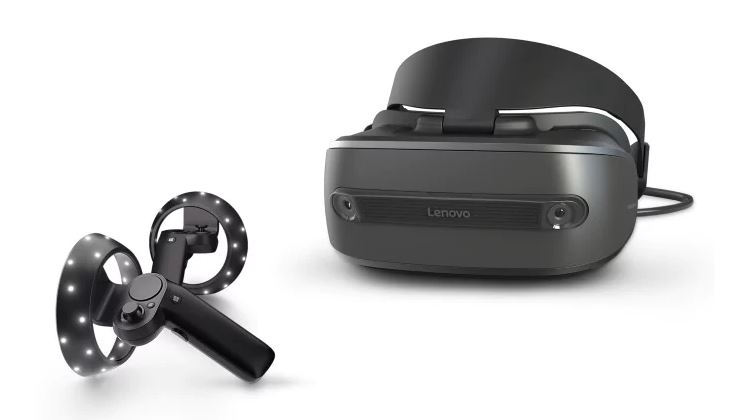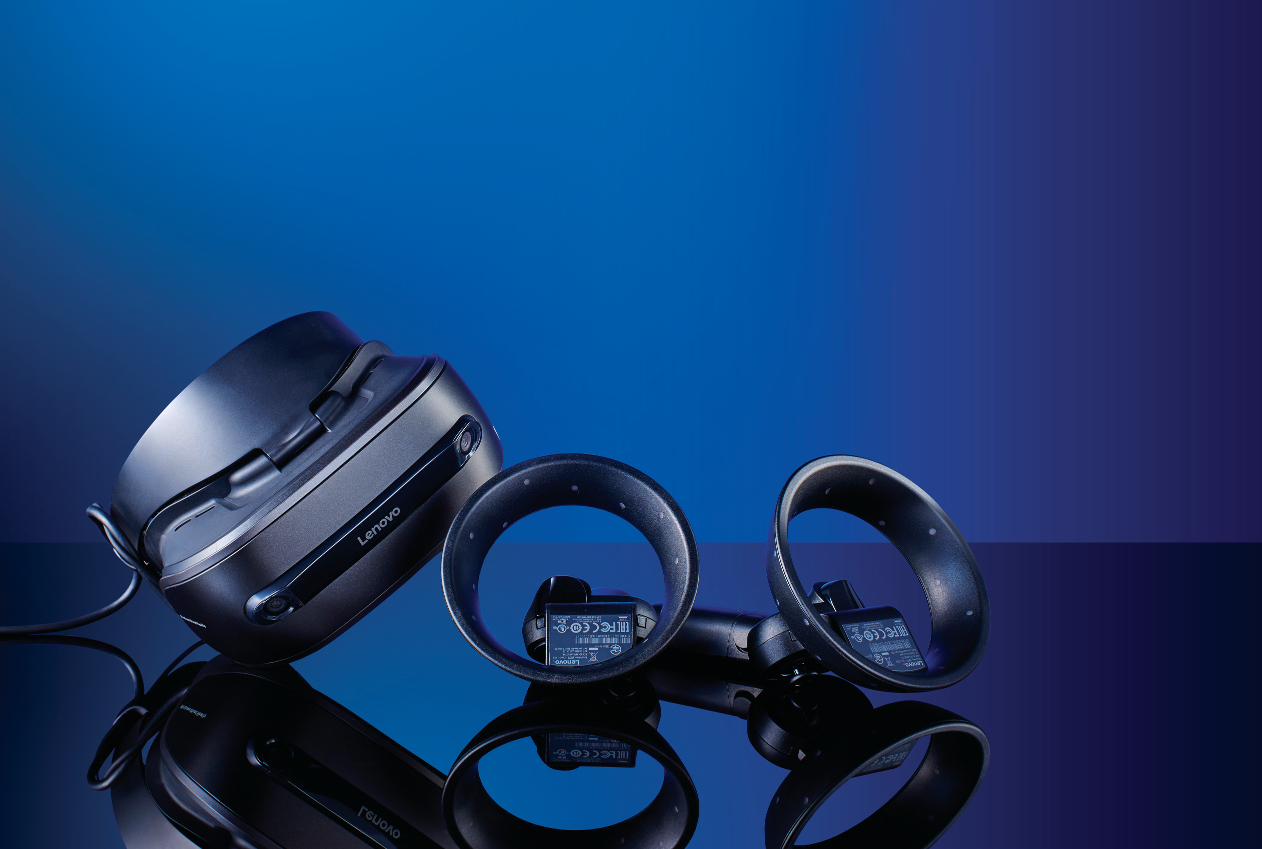Our Verdict
Rather than a VR revolution, this is a subtle evolution.
For
- High resolution displays
- Comfortable
- Wireless controllers
- Good price
Against
- No headphones
- Lacks individual lens control
- Movement loses focus
- Still no killer apps
PC Gamer's got your back
Price $450
Combined Resolution 2880x1440
Displays 2.89 inches
Field of View 110 degrees
Refresh Rate 90Hz
Connectivity HDMI 2.0, USB 3.0, 3.5mm jack, Bluetooth 4.0
Sensors Inside-out motion tracking, room scale
Headphones None
Weight 13.4oz
Virtual Reality hasn’t been the hit many expected. Almost two years after the release of the Vive and Rift, the PC finds itself playing second fiddle to the Sony PlayStation VR. The console upstart accounts for 49 percent of the VR market, with 21 percent going to the Rift, and 16 percent to the room-scale HTC Vive. The last 14 percent is claimed by largely wire-free options, which many expect to represent the future of the tech.
Into this fragmented landscape, the Lenovo Explorer and the rest of the new Mixed Reality headsets find themselves A fresh look at VR—with help from Microsoft Lenovo Explorer An improvement on first-gen VR, but it doesn’t go far enough. as something of an evolutionary oddity, straddling the moves made by the first-gen headsets and the untethered second-gen models. The hardware spec for the Lenovo Explorer puts in a good show against those first headsets, supporting a higher native resolution, and the option of augmenting the real with the virtual, but it still relies on a long cable plugged into your graphics card, anchoring you to the real world.
The most important aspect for any VR headset is the quality of the image that hits your eyeballs, and here the Explorer is a mixed bag. The screen door effect that was evident on the first generation models is still there, but not as obvious, and the added clarity of the higher resolution 1440x1440 displays is welcome. We did have a problem with focus, though, and found getting the image perfect in both eyes at the same time almost impossible.
At 13oz, the headset is light and comfortable in use, but the foam cushioning around the visor introduces subtle movements when you move your head, which causes blurring of the image. The immersion isn’t ideal either, because the screens are small, which gives a general feeling that you’re experiencing these virtual worlds through a diving mask, rather than actually being in the world. There are headsets that try to improve the field of view (FOV) problem, and using the Explorer, we can see why the industry is eyeing up such a move.
Like the first-generation headsets, the Lenovo Explorer lacks audio playback, preferring to let the user use their own headphones of choice. An argument we can understand in theory, but in practice it means there are even more wires and clutter to hit that immersive experience. The fact that the just-announced Vive Pro integrates audio into the headset is a good sign of where things need to go.

You’re going to need a relatively kickass machine to get the most from this headset—it shouldn’t come as too much of a surprise to learn that you’ll need a modern graphics card, although the reliance on Bluetooth 4.0 indicates that this is a platform that is aimed at laptop users more than high-end desktops. If your motherboard doesn’t have Bluetooth, you can pick up a dongle cheaply enough (you can find plenty on Amazon for less than $10), which does have us wondering why this isn’t just included in the pack.
We’re happy to hope something good can be born out of Microsoft getting in on the game, but it hasn’t emerged just yet.
The controllers themselves work well, and feel good in hand. And while, initially, knowing where the various buttons and thumbsticks are is a little tricky (you can’t see them, after all), a couple of hours in, it’s all very natural. The Lenovo Explorer supports room-scale VR without relying on Lighthouses, too, and from our experience, it works well, although you do need a good square yard or so of space to use it properly. Alternatively, you can just use it on your desk.
There is another, potentially bigger, problem for Lenovo, though—nearly two years after the release of the original HTC Vive and Oculus Rift, there’s still no killer app. There simply isn’t a convincing reason to buy into VR. Windows Mixed Reality does scatter a few more apps into the mix, but there’s nothing meaty enough to have us recommending you rush out and buy one.
There’s also the nagging feeling that maybe, just maybe, traditional gaming isn’t the best use of VR’s capabilities. This is backed up by the fact that it’s individual experiences that stand out most—a large whale swimming alongside you, the feeling of vertigo, looking down at a virtualized Tokyo, or the gut-clenching experiences of oh-so-many roller coaster rides. It’s here that the Mixed Reality angle, and Microsoft’s more educationally savvy offerings, could produce that much-needed killer app. We’re happy to hope something good can be born out of Microsoft getting in on the game, but it hasn’t emerged just yet.
The HTC Vive was released at $600, and the Oculus Rift can be picked up for under $500, so the fact that the Lenovo Explorer is available from $350 is to be commended, especially as it has an improved specification over first-gen gear. However, the market needs to move on even faster, and while a positive step, we expect even more to get the PC back on top. At this point, that’s going to require a revolution, rather than this subtle evolution.
This article was originally published in Maximum PC issue 149. For more quality articles about all things PC hardware, you can subscribe to Maximum PC now.
Rather than a VR revolution, this is a subtle evolution.
Alan has been writing about PC tech since before 3D graphics cards existed, and still vividly recalls having to fight with MS-DOS just to get games to load. He fondly remembers the killer combo of a Matrox Millenium and 3dfx Voodoo, and seeing Lara Croft in 3D for the first time. He's very glad hardware has advanced as much as it has though, and is particularly happy when putting the latest M.2 NVMe SSDs, AMD processors, and laptops through their paces. He has a long-lasting Magic: The Gathering obsession but limits this to MTG Arena these days.



